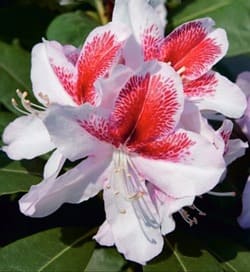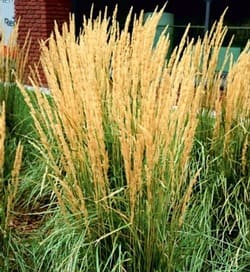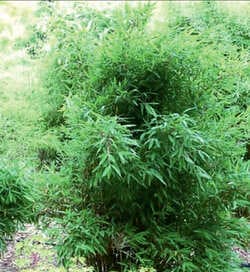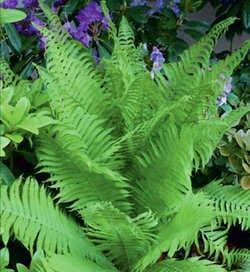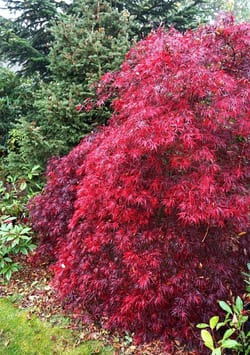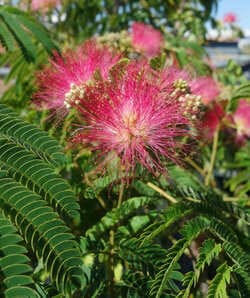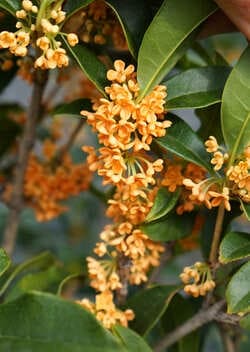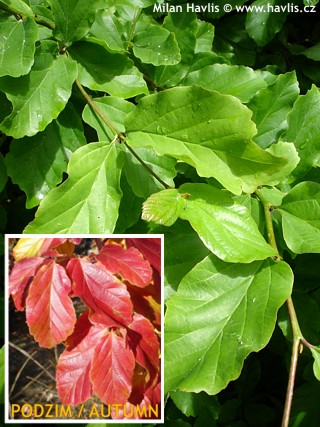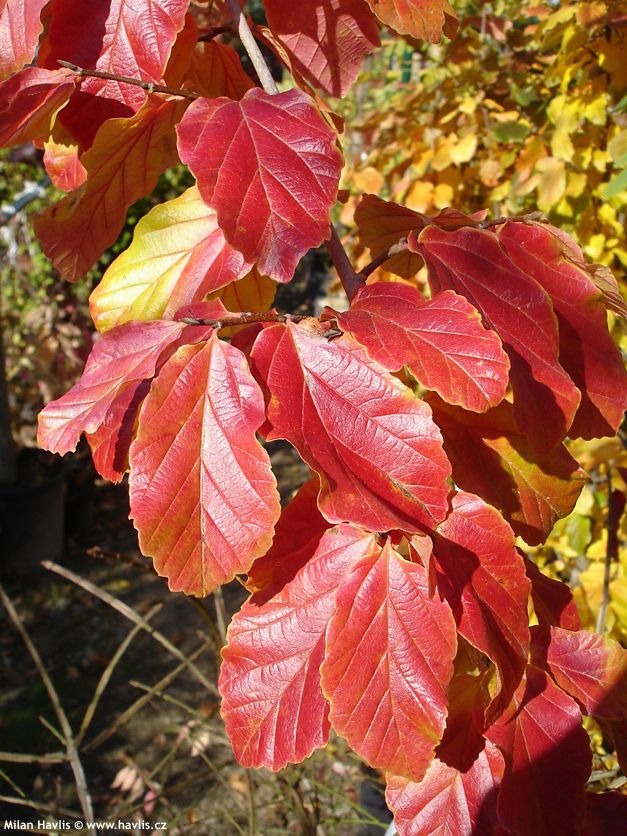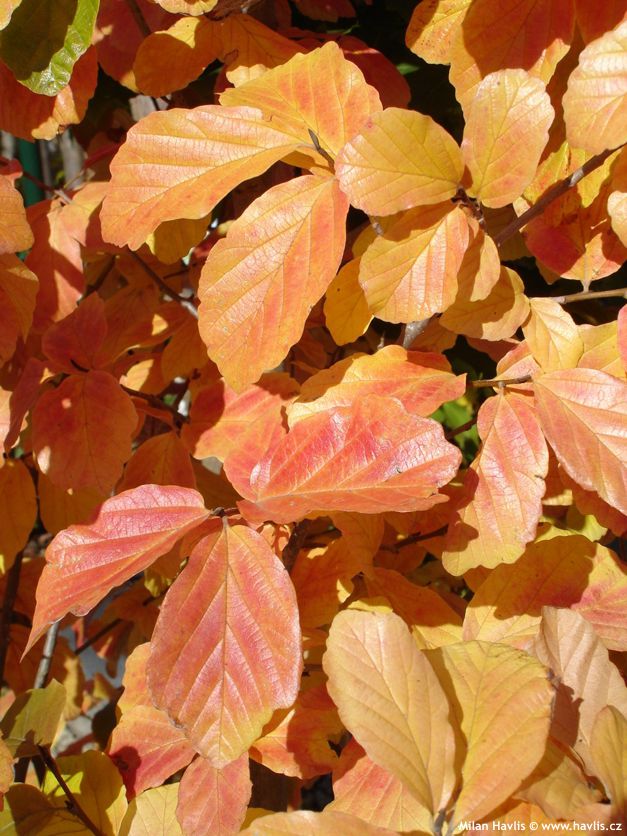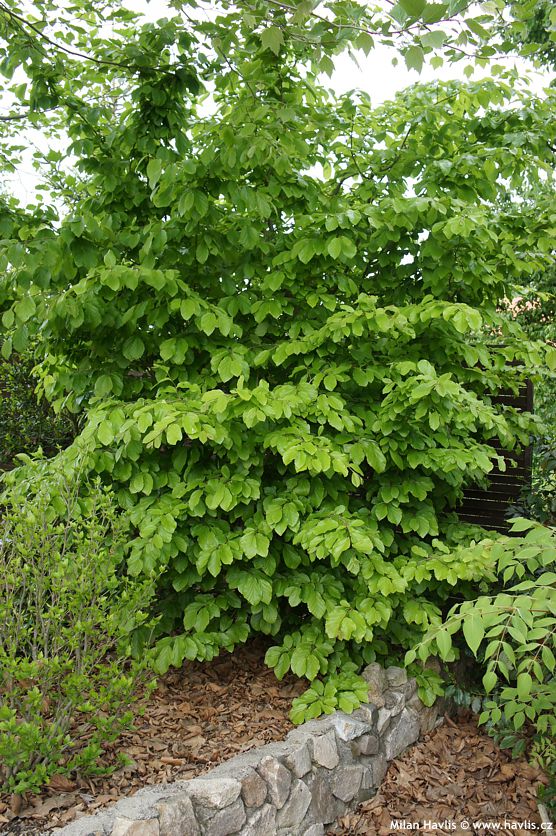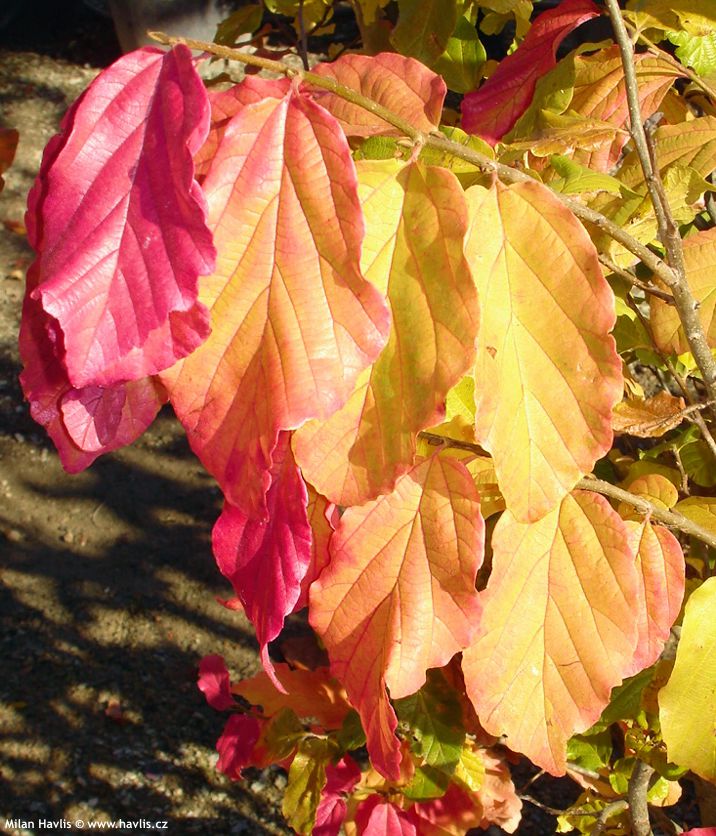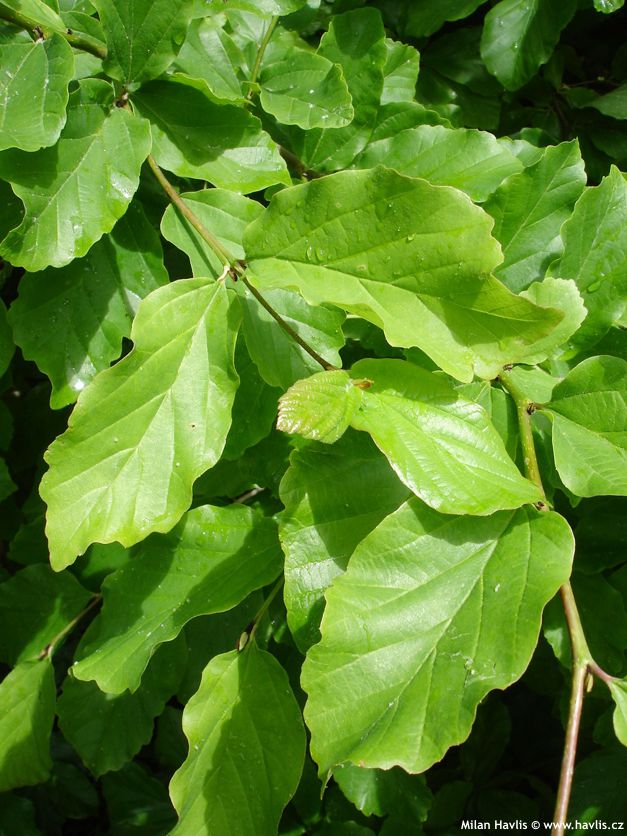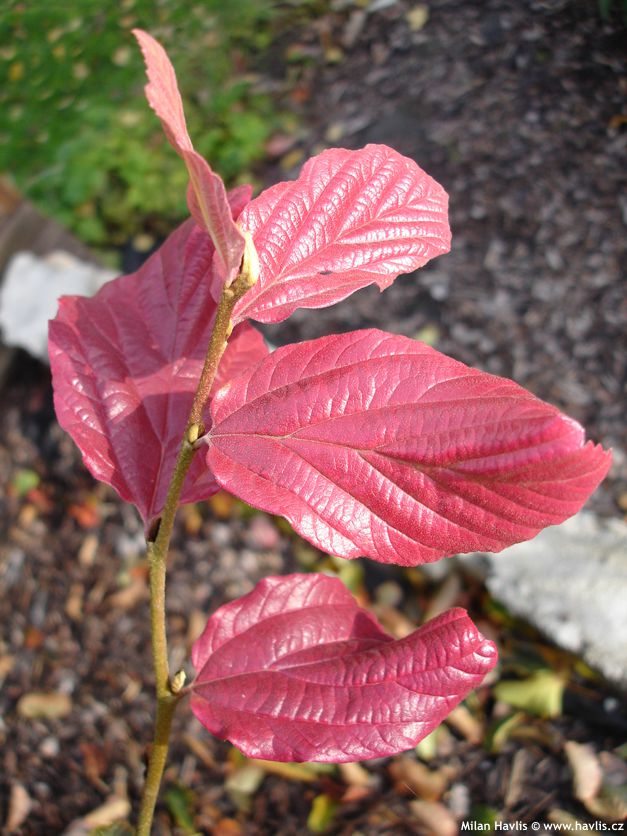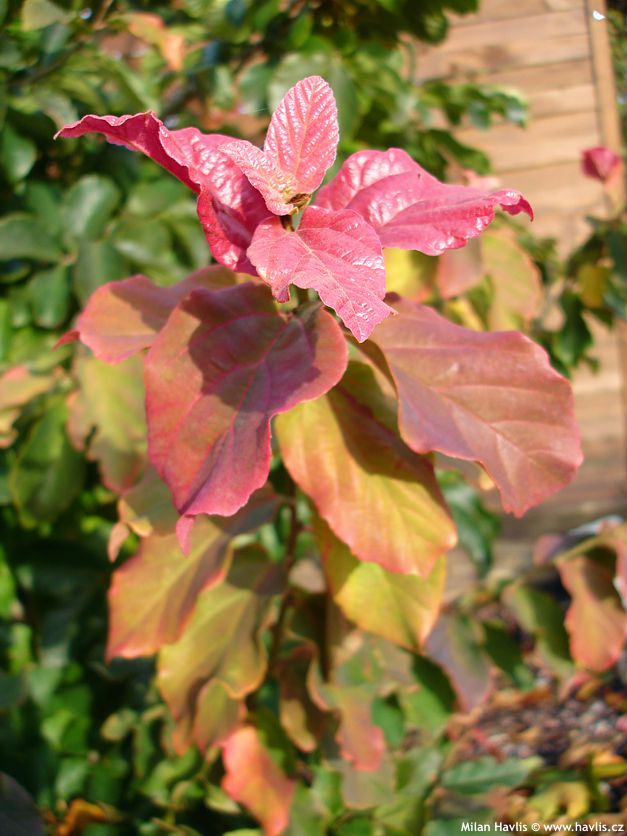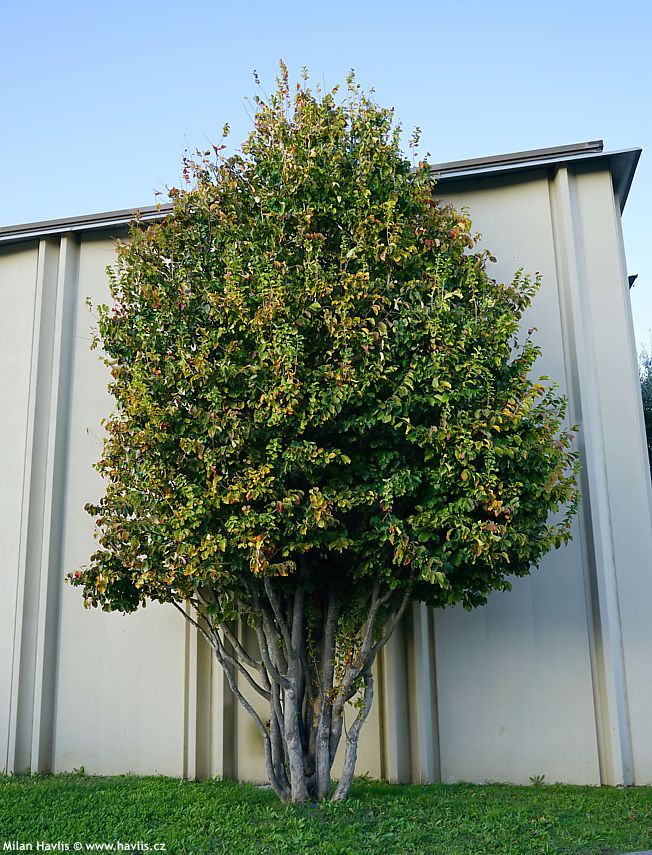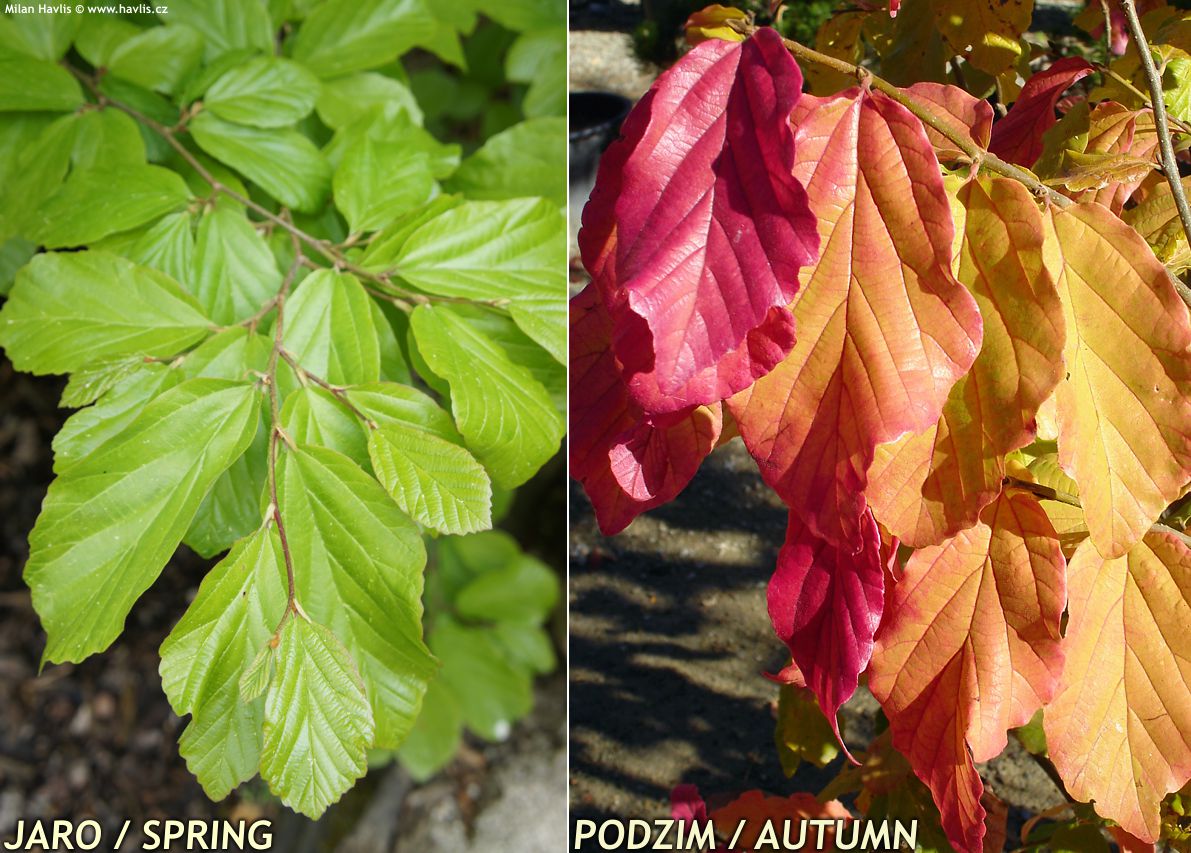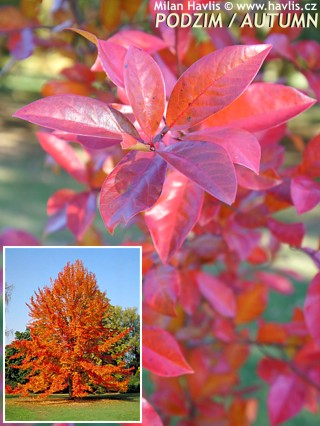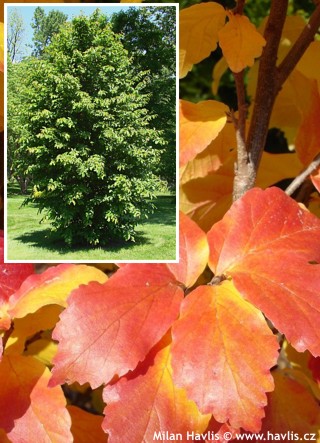Parrotia persica Persian ironwood
Parrotia
The genus Parrotia is small but botanically remarkable. It belongs to the witch‑hazel family (Hamamelidaceae), known above all for witch‑hazels with fragrant winter flowers, as well as Fothergilla and Corylopsis. The genus includes only a few species, the best known being the Persian ironwood, while its Chinese relative Parrotia subaequalis is rare and endangered. Scientists have found Parrotia pollen in middle Miocene fossils, proving its existence on our planet 12 to 14 million years ago – surprisingly in what is now southern Austria, where a subtropical climate prevailed at the time. It is valued above all for its extraordinary resilience – tolerating both drought and damp conditions, adapting well to European climates, and becoming a symbol of toughness. This is likely why in English it earned the name “ironwood”: its timber is exceptionally hard and was used for durable objects.
As its name suggests, the Persian ironwood truly originates in Persia, that is, in present‑day Iran. The precise natural range is the Alborz Mountains in northern Iran near the Caspian Sea. In the mountain forests of Iran and Azerbaijan it sometimes forms entire stands known as parrotietum. It was introduced to Europe in the mid‑19th century and soon appeared in the Royal Botanic Gardens at Kew, from where it spread to other English gardens. It was first described by the German botanist Carl Anton von Meyer, who worked in the Russian Empire, and named it in honour of his contemporary Georg Friedrich Parrot (1791–1841), a German naturalist at the University of Dorpat. Parrot undertook expeditions to Turkey and Persia after 1830, led the first ascent of Mount Ararat, and collected unknown plants along the way. His adventurous spirit captivated Meyer and inspired him to pay tribute in this way.
The Persian ironwood is a deciduous, usually multi‑stemmed tree with handsome leaves. They are smooth, glossy, broadly oval, similar to beech leaves but about twice the size: 6–15 × 4–10 cm, with pronounced veins that give them a sculptural quality. In spring they are light green, remaining fresh until autumn, when they transform as if by magic into dazzling shades of maroon, salmon, orange and deep yellow, tone by tone from the twig tips towards the trunk, like a row of coloured pencils laid side by side. It should be noted that in seed‑raised trees autumn colour is highly variable – one specimen may turn purely yellow (reportedly the case with New Zealand clones), another purplish, and yet another salmon to orange. The flowers are small clusters of crimson stamens appearing at the end of winter. They are not especially conspicuous, but if your tree is mature enough to bloom, it is worth stepping closer to admire them.
It grows quickly, both in youth and later, and naturally forms beautiful multi‑stemmed trees, needing only a light touch with secateurs or saw to highlight the dominant trunks. These are grey and smooth, and with age the bark peels away in thin layers to reveal an attractive mosaic reminiscent of plane trees, in pale shades of cinnamon, grey, pink and green. With more effort it can be trained into a single‑stem tree if your garden space does not allow a broad canopy. For the understorey choose interesting perennials such as ferns, Liriope or Canadian dogwood, so there is always something worth looking at outside the main season of ironwood’s attraction.
Reports of mature height vary considerably. The RHS encyclopaedia states 8 metres, Wikipedia as much as 30, but no specimen of such stature has ever been documented. The tallest recorded individuals reach rather between 15 and 18 metres – for example, a tree in the Morris Arboretum in Philadelphia measured about 15 metres in 2010; in the Arnold Arboretum in Boston it was no taller, but the crown spread was an impressive 23 metres; while the British champion on the Isle of Wight reached 18.4 metres in 2023. It is long‑lived and suffers neither from pests nor diseases.
Give the Persian ironwood a spacious, sunny position in your garden, where its structure and autumn colours in warm tones can be fully appreciated. For contrast, combine it with shrubs or trees of sharper autumn hues such as sweetgums or Japanese maples. It prefers fertile, deep soil, moist but well‑drained; once established it copes excellently with drought, urban pollution, severe frosts and summer heat. For the best autumn colours, it is better grown in acidic conditions, though in nature it also thrives on highly calcareous soils. It is virtually care-free: apart from occasional watering only in the first year after planting it needs nothing but admiration. Pruning can be carried out before budbreak from late winter to early spring. Fully hardy to about −34 °C (USDA zone 4). Owing to its deep roots it is unsuitable for container cultivation, not even in large planters.
Last update 22-10-2006; 21-01-2024; 18-11-2025












